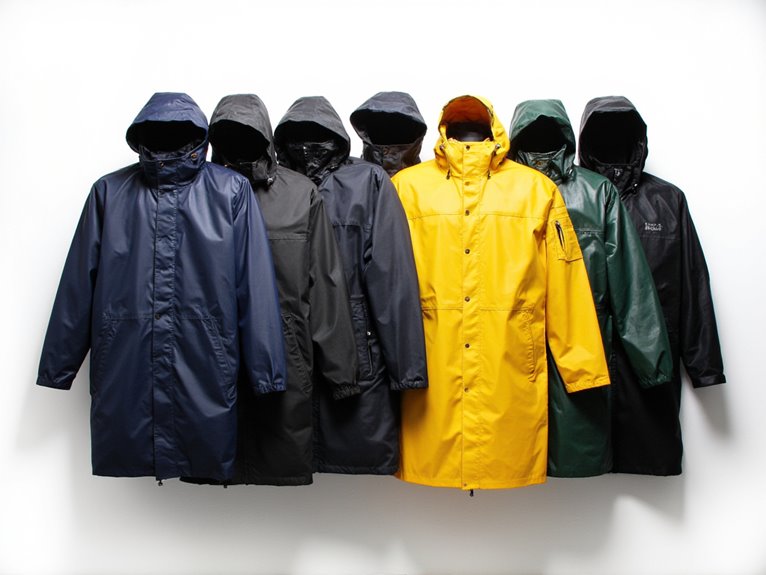Do Hiking Boots Have Shanks?
Hiking boots often feature a shank, a sturdy structure between the insole and outsole that provides essential support and protection for the foot during outdoor excursions. This structure helps distribute pressure evenly, reduces fatigue, and shields the foot from rough surfaces. Shanks come in various types, including full-length, three-quarter, and quarter shanks, each catering to specific hiking needs. While not all hiking boots have shanks, they provide added stability, support, and protection for a safer and more comfortable hiking experience. Now, discover the intricacies of shank design, materials, and how to choose the right hiking boots for your next adventure.
We are supported by our audience. When you purchase through links on our site, we may earn an affiliate commission, at no extra cost for you. Learn more. Last update on 7th January 2026 / Images from Amazon Product Advertising API.
What Is a Shank in Hiking Boots?
A shank, a critical component in hiking boots, refers to a sturdy, supportive structure located between the insole and outsole that provides added stability and protection to the foot during outdoor excursions.
This essential element helps to distribute pressure evenly, reducing fatigue and discomfort.
By providing a solid foundation, the shank allows for more efficient energy transfer, enabling hikers to tackle challenging terrain with confidence.
In addition, it shields the foot from rough surfaces, sharp objects, and extreme temperatures, ensuring a safer and more comfortable hiking experience.
A well-designed shank is crucial for any serious hiker, as it directly impacts overall performance and enjoyment on the trail.
Types of Shanks in Hiking Boots
Within the domain of hiking boots, shanks can be broadly categorized into three primary types, each designed to cater to specific hiking needs and preferences.
The first type is the full-length shank, which provides maximum ankle support and stability, ideal for heavy backpacking or rugged terrain.
The second type is the three-quarter shank, offering a balance between support and flexibility, suitable for day hikes or lighter backpacking trips.
The third type is the quarter shank, providing minimal support and maximum flexibility, best suited for casual day hikes or easy trails.
Understanding the differences between these shank types can help hikers select the most suitable boots for their specific needs, ensuring a comfortable and enjoyable hiking experience.
Benefits of Shanks in Hiking Boots
In terms of hiking boots, shanks play a vital role in enhancing the overall performance and comfort of the footwear.
The incorporation of shanks in hiking boots yields several benefits, including added stability, better ankle support, and increased torsional rigidity.
Added Stability
Every hiker knows that stable footing is essential on uneven terrain, and shanks in hiking boots play a pivotal role in providing that extra stability and support.
The stiffening component of the shank provides lateral stability, allowing hikers to traverse rocky or slippery surfaces with confidence.
This added stability is particularly vital when carrying heavy backpacks or tackling steep inclines.
By providing a solid foundation, shanks enable hikers to maintain their balance and composure, even in challenging environments.
With a shank, hikers can focus on the trail ahead, rather than worrying about every step.
This improved stability translates to a more enjoyable and safer hiking experience.
Better Ankle Support
One of the most significant advantages of shanks in hiking boots is the improved ankle support they provide, which is essential for preventing twists, sprains, and other injuries that can quickly derail a hiking trip.
With a shank, the ankle is stabilized, reducing the likelihood of unwanted movements that can lead to injury.
This is particularly important on uneven terrain, where a single misstep can have serious consequences.
By providing a solid, stable platform, shanks help to keep the ankle in alignment, reducing the stress and strain that can lead to injuries.
This added support enables hikers to tackle challenging terrain with confidence, knowing their ankles are well-protected.
Increased Torsional Rigidity
Shanks in hiking boots improve torsional rigidity by resisting twisting forces that can cause ankle rolls and sprains.
By providing a sturdy, unyielding platform, shanks enable hikers to navigate rocky, uneven trails with confidence.
This increased torsional rigidity allows hikers to maintain balance and stability, even on treacherous terrain.
As a result, hikers can hike longer and farther with reduced fatigue and risk of injury.
With shanks providing added stability, hikers can focus on the trail ahead, rather than worrying about every step.
Why Some Hiking Boots Lack Shanks
Many modern hiking boots deliberately omit shanks, a design choice driven by the desire to create a more flexible and responsive footwear that can better adapt to varying terrain and hiking styles.
This design approach prioritizes agility and comfort over rigid support, making it ideal for shorter, lighter hikes or trail running.
Without the added stiffness of a shank, the boot can naturally flex and move with the foot, providing a more intuitive hiking experience.
Additionally, the reduced material usage can result in a lighter overall weight, making it easier to cover long distances.
While this design may not be suitable for heavy backpacking or rugged terrain, it offers a compelling option for those seeking a more dynamic and comfortable hiking experience.
Shank Materials and Construction
In terms of shank materials and construction, hikers have a choice between steel shank options and composite materials.
Steel shanks offer superior support and stability, making them ideal for heavy backpackers and those tackling rugged terrain.
Meanwhile, composite materials provide a lighter, more flexible alternative that still offers adequate support for day hikers and those carrying lighter loads.
Steel Shank Options
In addition to providing excellent ankle support, steel shanks in hiking boots also offer superior protection from rough terrain and harsh weather conditions.
Steel shanks are often preferred by hikers who venture into rugged landscapes, as they provide an added layer of protection against sharp rocks, roots, and other obstacles.
The steel material is incredibly durable, resistant to corrosion, and can withstand the rigors of heavy use.
In addition, steel shanks are often paired with waterproof membranes, ensuring that feet remain dry and comfortable even in wet conditions.
When choosing a steel shank hiking boot, consider the thickness and flexibility of the shank, as well as the overall weight and breathability of the boot.
Moreover, it is essential to select a boot that meets your specific hiking needs and preferences.
Composite Materials
While steel shanks offer exceptional protection and durability, hikers seeking a lighter, more flexible option may prefer boots featuring composite materials, which combine the benefits of strength and agility.
Composite shanks are made from a combination of materials, such as carbon fiber, Kevlar, and polypropylene, which provide excellent resistance to fatigue and cracking. These materials also offer improved flexibility, making them ideal for hikers who prioritize comfort and mobility.
Some benefits of composite shanks include:
- Reduced weight without compromising support
- Improved flexibility for increased mobility
- Improved durability and resistance to cracking
- Better thermal insulation for cold weather hiking
- Customizable stiffness and flexibility for tailored performance
Shank Vs. Midsole Support
A critical component of hiking boots is the type of support provided by the shank and midsole, as these features can significantly impact the comfort, stability, and overall performance of the boot during outdoor activities.
The shank, typically located between the midsole and outsole, provides lateral stability and prevents excessive foot flexion.
In contrast, the midsole, situated between the shank and insole, offers cushioning and shock absorption.
While both components are essential, they serve distinct purposes.
A well-designed shank guarantees a secure fit, while a quality midsole reduces fatigue and discomfort.
Understanding the differences between shank and midsole support is vital in selecting the right hiking boots for your specific needs and preferences.
Hiking Boot Shank Placement Matters
Proper placement of the shank in hiking boots is essential, as it directly affects the overall fit, stability, and performance of the boot. A well-positioned shank provides superior support and protection for the foot, allowing for a more comfortable and confident hiking experience.
Central placement is crucial, as the shank should be centered in the midsole to facilitate even weight distribution and stability.
Lengthwise alignment is also important, as the shank should run lengthwise along the boot, following the natural curve of the foot.
The shank should have proper thickness, being thick enough to provide adequate support, but not so thick that it compromises flexibility.
The material selection for the shank is critical, as it should be durable, yet lightweight and flexible.
Choosing Hiking Boots With Shanks
When selecting hiking boots with shanks, consider the specific demands of your hiking terrain and the type of hiking you'll be doing, as this will help you determine the ideal shank material, thickness, and design for your boots.
For example, if you'll be hiking on rugged, rocky trails, you'll want boots with a stiffer, more substantial shank to provide adequate ankle support and protection.
On the other hand, if you'll be hiking on smoother trails, a lighter, more flexible shank may be sufficient.
Additionally, consider the weight and breathability of the shank material, as well as any specific features such as toe protection or waterproofing.
Shank Alternatives in Hiking Boots
In lieu of traditional shanks, some hiking boots feature alternative materials or designs that offer similar support and protection, often with added benefits like increased flexibility or reduced weight.
These alternatives cater to hikers who prioritize comfort, agility, or minimalism.
Rock plates: Thin, flexible plates that protect the foot from rough terrain without adding bulk.
Stiffened midsoles: Reinforced midsoles that provide support and stability without the need for a traditional shank.
3D-printed components: Customizable, lightweight components that offer tailored support and flexibility.
Carbon fiber inserts: Ultralight, high-strength inserts that provide support and protection without added weight.
Advanced materials: New materials like graphene or advanced polymers that offer superior strength-to-weight ratios.





